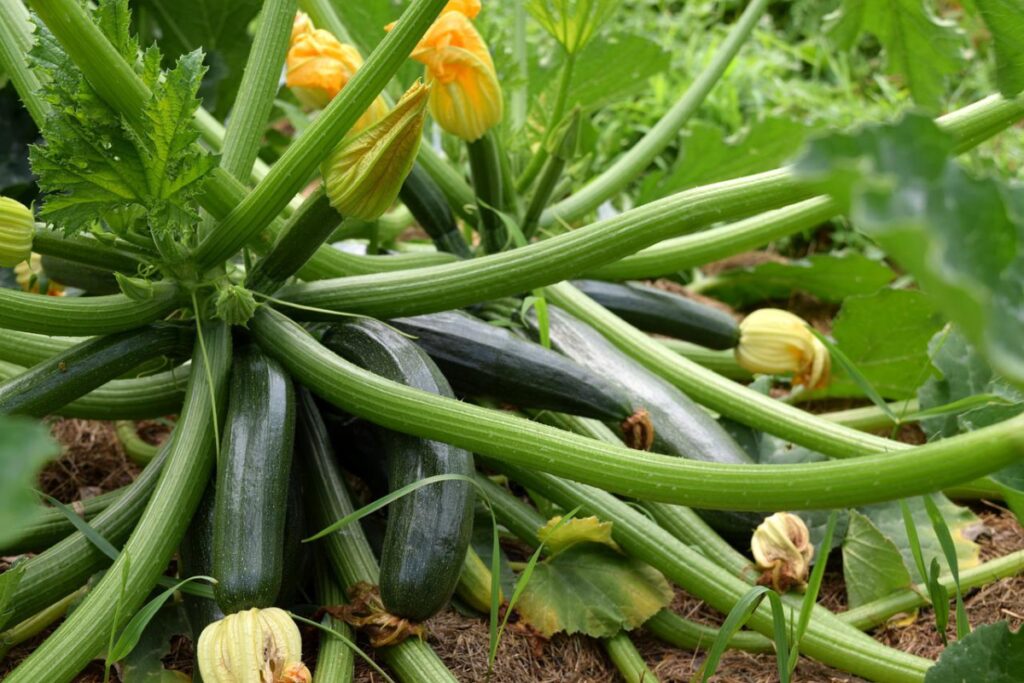No matter what’s in your garden, pests can be a problem. However, for those gardeners growing squash, there are a few specific pests to keep an eye out for.
Read on to learn more about how to identify, prevent, and treat an invasion of three squash-killing insects.

Squash Vine Borer
How to Identify
These creatures are small, cream-colored caterpillars that do damage from the inside of the squash’s stem. Unfortunately, these critters are difficult to find before they’ve damaged the plant.
To determine if your squash plants are infested with these pests, you’ll see a rapid decline in the plant’s health; the leaves will wilt and flowers will fall off of the plant before maturing.
If you suspect squash vine borers, check the base of the plant. If they’re present, there will be a small hole at the base of the stem accompanied by saw-dust-like residue.
Prevention and Treatment
Typically, upon discovery of these difficult pests, it’s too late for the plant. That means prevention is the best course of protection.
Maintaining the garden is key, so make sure to dispose of squash plants at the end of the year and destroy any plants that have been infested — do not compost them! Additionally, since the squash vine borer overwinters in the soil, it is essential to rotate your squash plants.
Another method to try is to create a barrier of light, stretchy material (like nylon) at the base of the plant. This barrier will, hopefully, prevent these nasty pests from disturbing the plants.
Squash Bug
How to Identify
The squash bug can wreak havoc to any plant of the squash family. These insects will suck the plant’s sap and juices, causing damage to the plant and reducing any harvest it could provide.
The adult squash bug will have a flat back accompanied with a grayish-brown body and measure around 0.6 of an inch long.
Watch out for bronze-colored eggs on the underside of the plants’ leaves and make sure to take care of them right away! If these eggs are allowed to hatch, they will begin sucking out the plants’ nutrients and chewing on the leaves, eventually causing the plant to wilt.
Prevention and Treatment
If you find squash bug eggs on the underside of a plant’s leaves, the best thing to do is squish them with your hand.
However, keep on the lookout for any pale green nymphs. These insects will become darker as they mature and will need to be handpicked from the plants. Once they’re off the plant, make sure to place them in some soapy water.
To prevent squash bugs entirely, try spraying the plant with neem oil. This oil has an odor that squash bugs avoid; plus, if they happen to eat a leaf covered in the oil, they won’t reproduce. Unfortunately, this method works slowly.
Another prevention method is to coat the leaves in kaolin clay. This creates a barrier that prevents the bugs from eating the plant’s leaves. It will need to be reapplied though as it washes off in the rain.
Aphids
How to Identify
These sap-sucking pests will attach themselves to the underside of the plants’ leaves. Aphids tend to vary in color, but are tiny creatures only averaging an eighth of an inch as adults. So, it’s important to perform a closer inspection on the underside of your plants’ leaves.
Aphids tend to appear in larger groups and will multiply quickly. So be sure to act quickly if you spot any!
Prevention and Treatment
To get rid of aphids, use your hose to blast them off the plant; just make sure to keep an eye on the other plants as well.
If that method isn’t effective, try encouraging beneficial insects into your garden. Adding some nectar-filled flowers can encourage ladybugs or lacewings to the garden to help keep the aphids under control.
A final way to deal with these pesky pests is to use neem oil. Spray the top and bottom of the leaves every 1-2 weeks to keep the aphids away.
More Gardening Information
Looking for more information to help your garden thrive? Check out some of our other articles! From composting to colorful summer flowers, we have a ton of information for gardeners of all levels.
Make sure to stay informed about our latest post by following us on Facebook and Twitter too!
